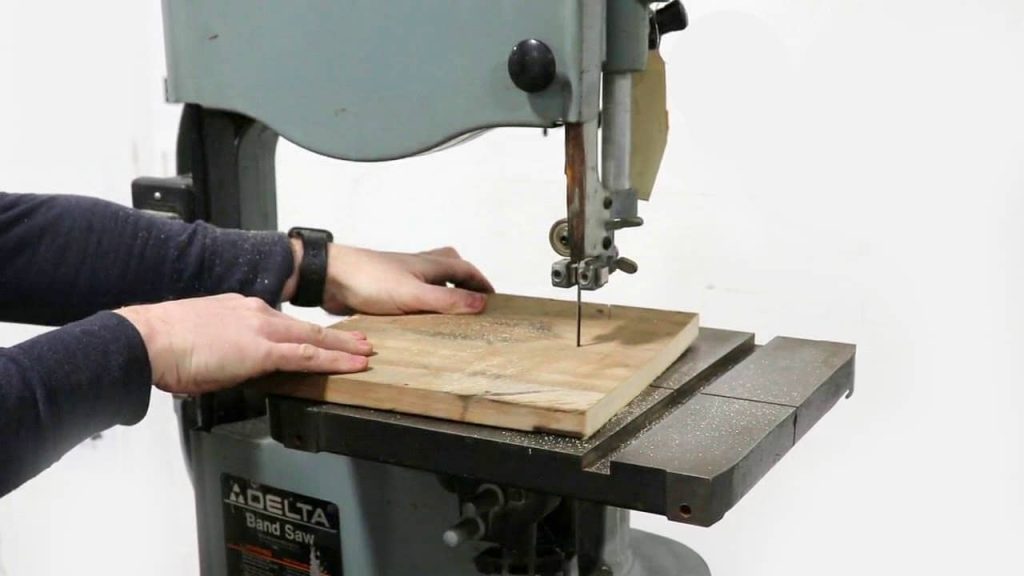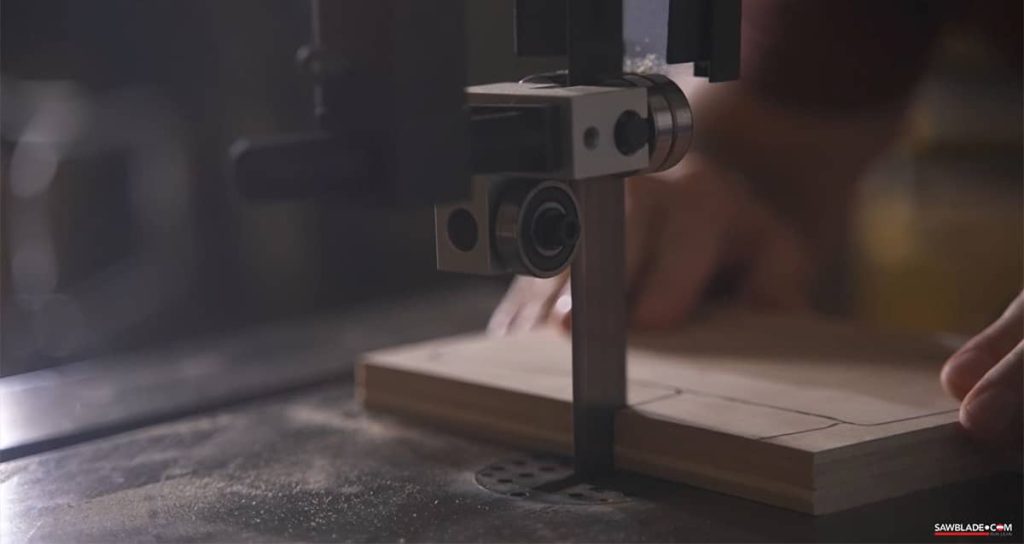Why Maintenance Matters
Although bandsaws are reliable equipment, they require routine maintenance to function at their peak efficiency. Ignoring maintenance can result in motor strain, damaged blades, and poor precision. You can keep your machine from breaking down and achieve reliable results by following a set timetable.
Weekly Maintenance Checklist
These quick weekly tasks keep the saw clean and tuned for everyday use.
-
Remove dust, resin, and debris from the table, guides, and wheels
-
Inspect the blade for cracks, dullness, or buildup
-
Check blade tension and tracking on the wheels
-
Verify side and thrust guides are aligned correctly
-
Apply lubrication where recommended
-
Test the safety guard and power switch

Cleaning as a Habit
A clean equipment lasts longer and operates more smoothly. To get rid of chips or sawdust, use compressed air or a vacuum. If necessary, clean the surfaces of metal-cutting saws and apply rust prevention.
Blade Care
The blade is the heart of your bandsaw. A sharp, clean blade prevents poor cuts and motor strain. Replace the blade if you notice burning smells, vibration, or trouble cutting straight lines.
Monthly Maintenance Checklist
Monthly tasks go deeper, addressing alignment and moving parts.
-
Inspect wheel tires for cracks, wear, or buildup
-
Align the wheels to keep the blade running true
-
Spin bearings and pulleys to check for smooth movement
-
Square the table to the blade at 90°
-
Inspect the drive belt for fraying or looseness
Focus on Alignment
Cut accuracy is significantly impacted by table calibration and wheel alignment. A square guarantees that the table is positioned correctly for precise work, while a straightedge aids in verifying wheel alignment.
Bandsaw Maintenance Overview
| Frequency | Tasks |
|---|---|
| Weekly | Clean, check blade, confirm tension and tracking, test safety parts |
| Monthly | Inspect tires, bearings, pulleys, belt, and table alignment |
| Yearly | Replace worn parts, recalibrate, clean motor, inspect wiring |
Yearly Maintenance Essentials
Annual maintenance is all about long-term performance. Replace worn-out guides, tires, or belts. Recalibrate adjustments like tracking and fence alignment. Clear dust from the motor and tighten bolts or fasteners on the stand and frame.
Yearly Steps to Follow
-
Replace guides, belts, tires, or bearings showing wear
-
Recheck tracking, tilt, and fence calibration
-
Inspect motor for overheating or irregular noise
-
Tighten bolts on the stand or frame
-
Check wiring, switch, and safety features

Adjusting for Seasons
Use rust inhibitors to shield exposed metal in cold or damp stores. Clean more frequently and monitor motor performance in hot or dusty environments.
Keep Your Bandsaw Blades in Top Shape
A properly adjusted guide system can make all the difference in how long your blade lasts. Incorrect setup leads to wear, drift, and even damage that shortens blade life. To learn the right way to adjust guides and protect your investment, check out our article: “Extend the Life of Your Bandsaw Blade with Correct Guide Setup.” It’s a must-read for anyone who wants smoother cuts and longer-lasting blades.
Parts and Upgrades
When replacements are needed, high-quality parts can make a big difference. Sawblade.com offers reliable blades, guides, and bearings for many saw models, helping you get more from your machine.
With consistent weekly, monthly, and yearly maintenance, your bandsaw will stay sharp, safe, and ready for any project. A little routine care saves time, prevents costly repairs, and ensures your cuts stay accurate.